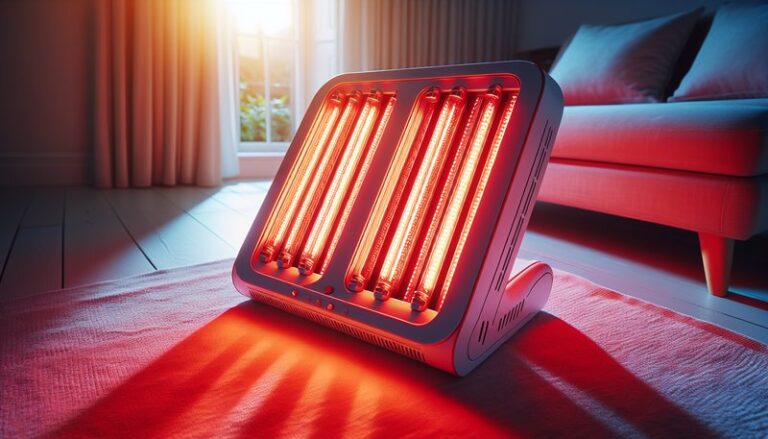Does Red Light Therapy Help Sun Damage?
Does Red Light Therapy Help Sun Damage?
Have you ever wondered if there’s a way to reverse sun damage on your skin?
In this article, we’ll explore the potential of red light therapy as a treatment for sun-damaged skin. We will discuss what red light therapy is, the benefits it may offer for sun damage, considerations before trying it, alternatives available, and whether it is recommended for this purpose.
Key Takeaways
- Red light therapy has shown promise in promoting skin healing and could help reduce the appearance of sun damage.
- The therapy works by stimulating collagen production and enhancing the skin’s healing processes.
- Consideration of skin type and professional guidance is crucial before beginning red light therapy.
What is Red Light Therapy?
Red light therapy (RLT) is a non-invasive treatment that utilizes low-level wavelengths of red light to penetrate the skin. It is thought to improve various skin conditions by enhancing cellular function and promoting healing.
Initially developed in NASA’s studies to promote healing in astronauts, red light therapy has gained popularity in dermatology and aesthetic medicine. The light is absorbed by the skin cells, leading to improved cellular energy production, which can help repair damaged tissues, increase collagen production, and enhance blood flow.
Mechanism of Action
When red light is applied, it activates the mitochondria within skin cells, leading to increased ATP (adenosine triphosphate) production. ATP is the energy carrier in cells, and more ATP means better performance of cellular functions. This mechanism is crucial for skin rejuvenation, particularly in the context of sun-damaged skin.
What are the Benefits of Red Light Therapy?
Red light therapy offers several benefits that can be particularly beneficial for individuals dealing with sun damage.
Promotes Collagen Production
One of the significant benefits of red light therapy is its ability to stimulate collagen synthesis. Collagen is essential for skin elasticity, firmness, and texture. Increased collagen levels can help diminish fine lines, wrinkles, and rough skin often associated with sun exposure.
Reduces Inflammation
Red light therapy has anti-inflammatory properties, which can soothe irritated skin and reduce redness and swelling. This is especially useful for those who have hyperpigmentation or sun spots resulting from solar injury.
Enhances Skin Repair
The therapy encourages faster cell turnover and repair, meaning that it can help heal sun-damaged cells more quickly. This leads to an improved overall skin appearance and texture over time.
Improves Circulation
By enhancing blood flow, red light therapy ensures better oxygenation and nutrient delivery to the skin, further aiding in the repair processes and potentially leading to healthier skin.
Is it Possible to Treat Sun Damage with Red Light Therapy?
Yes, it is indeed possible to treat sun damage with red light therapy. However, the effectiveness can vary based on factors like the severity of the damage, skin type, and individual response to the therapy.
What are the Advantages of Treating Sun Damage?
Non-Invasive Approach
Unlike surgical options, red light therapy is non-surgical and poses minimal risk, making it a preferred choice for many individuals seeking less invasive treatments.
Suitable for All Skin Types
Red light therapy is generally safe for all skin types, allowing a wide range of individuals to benefit from its soothing and reparative properties.
Learn all about it in Can Red Light Therapy Cause Hives?
Minimal Side Effects
Compared to chemical peels or laser treatments, red light therapy has few side effects. Patients may experience slight warmth, but there is no downtime or significant discomfort.
What are the Disadvantages of Treating Sun Damage?
Time Commitment
Effective treatment may require multiple sessions over several weeks, which can be time-consuming and require commitment from the individual.
Results Vary
Not everyone will see the same results, and some individuals may not respond as well to the treatment as others. Thus, managing expectations is crucial.
Cost Considerations
Multiple sessions can also accrue costs, making it a more expensive option compared to other topical treatments.
What are the Things to Consider Before Trying Red Light Therapy?
Before deciding to undergo red light therapy for sun damage, several considerations should be taken into account.
Consultation with a Professional
It’s essential to consult with a dermatologist or qualified practitioner who can assess your skin condition and determine if red light therapy is appropriate for you.
Understand Your Skin Type
Different skin types respond differently to treatments. Knowing your skin type will help tailor the therapy to your specific needs and maximize benefits.
Set Realistic Expectations
It’s important to approach red light therapy with realistic expectations. While many people experience improvement, it may take time, and results can vary.
What are the Alternatives to Red Light Therapy?
If red light therapy doesn’t seem like the right fit, other options can also help with sun damage.
Chemical Peels
Chemical peels involve applying a solution that exfoliates the outer layer of skin, revealing newer and healthier skin underneath. They can reduce sun damage, pigmentation, and fine lines.
Laser Treatments
Laser therapies can target sun damage more aggressively. Fractional lasers, for example, can stimulate collagen production while reducing pigmentation and uneven skin texture.
Topical Retinoids
Retinoids, derived from vitamin A, can promote skin cell turnover and improve texture and pigmentation over time. They are effective but may require consistent use.
Sunscreen and Protective Measures
While not a treatment per se, consistent sunscreen use prevents further sun damage and is critical in a comprehensive skin care routine.
Conclusion: Is it Recommended to Try Red Light Therapy for Sun Damage?
Red light therapy presents a promising option for treating sun damage, offering various benefits such as promoting collagen production, reducing inflammation, and enhancing skin repair. However, its effectiveness may vary and requires a thoughtful approach—even if it shows potential, it is crucial to consider personal skin conditions and consult with professionals.
Frequently Asked Questions
How long does it take to see results from red light therapy?
Results can vary depending on skin condition and treatment frequency. Many individuals report improvements after a few sessions, but optimal results may take several weeks to manifest.
Learn the details in Do dermatologists recommend red light therapy?
Is red light therapy safe for all skin types?
Yes, red light therapy is generally safe and suitable for all skin types, making it a versatile treatment option.
Can I perform red light therapy at home?
There are at-home devices available, but it’s recommended to consult a professional for the best results and to ensure proper usage.
Are there any side effects?
Side effects are minimal; most individuals experience only slight warmth during treatment. However, it’s important to follow guidelines to avoid overstimulation.
How often should I undergo red light therapy for sun damage?
Typically, sessions are recommended 2-3 times a week for noticeable results, but a professional can provide a tailored schedule based on specific needs.





